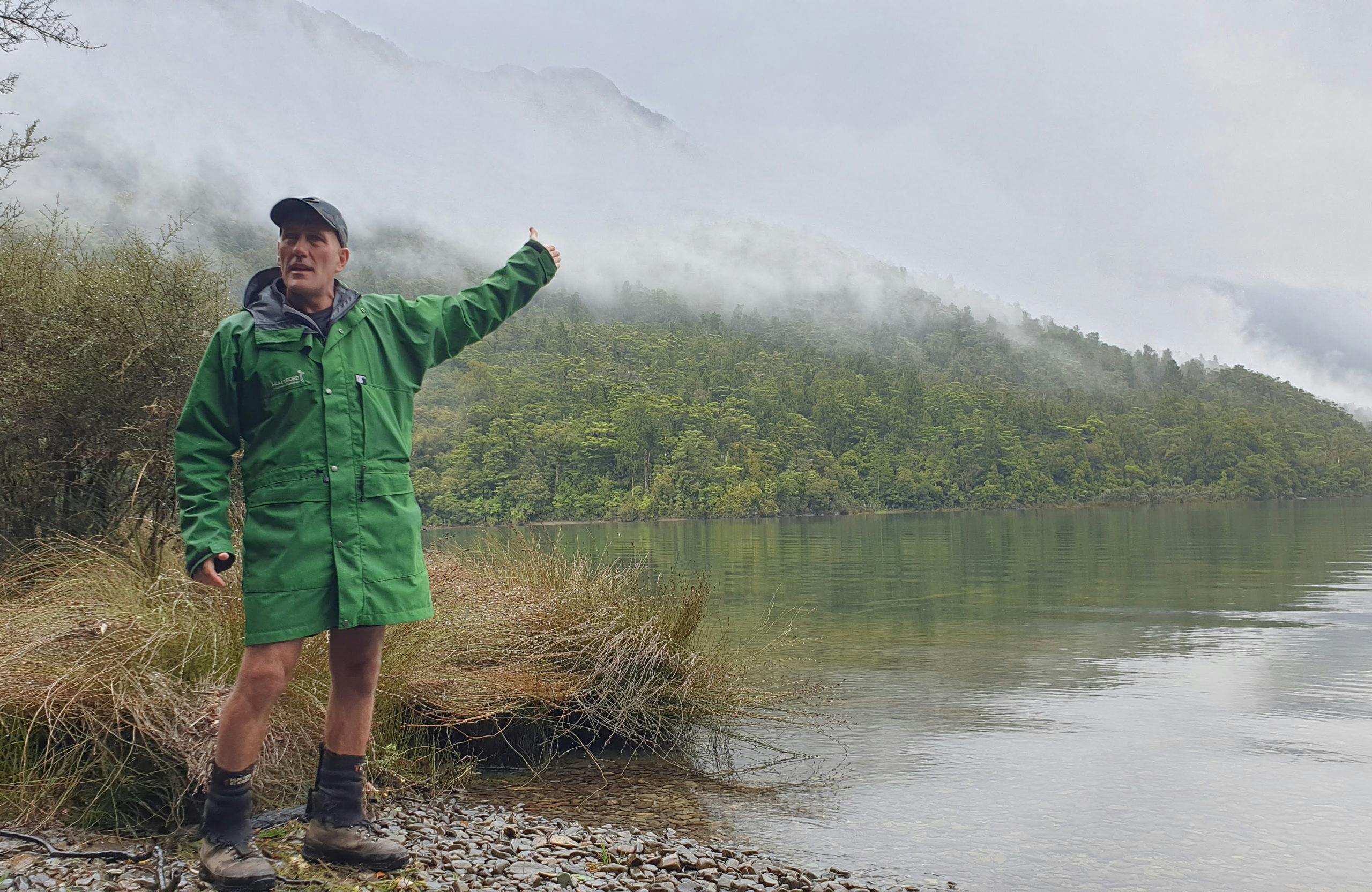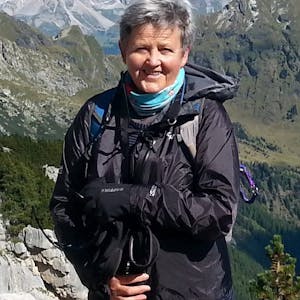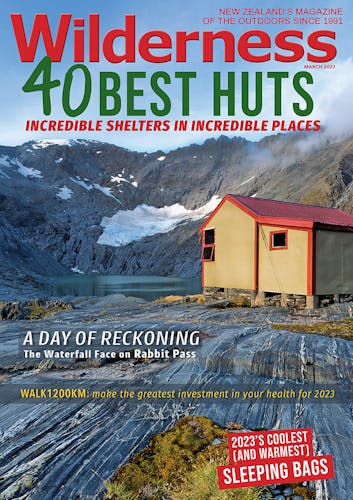More Kiwi trampers are going on guided trips and more are interested in helping conservation. Wilderness asked guide and ardent conservationist Bard Crawford what it’s like to guide locals in their own backyard.
When I first met Bard Crawford, on Ngāi Tahu Tourism’s Hollyford Wilderness Experience, I didn’t think I needed him. After a lifetime of tramping throughout New Zealand, here was this guy telling me all about what I was tramping through. Just let me walk, I grumbled to myself.
He soon snapped me out of that. And, with his stories, his respect for the mana whenua, his knowledge and entertaining energy, I learned heaps.
Bard’s now in his 23rd season (14 of them consecutive) as a Ngāi Tahu Tourism guide. He’s also hosted clients throughout New Zealand for National Geographic Expeditions and, post-Covid, is rebuilding his own private guiding business.
This summer, despite the open borders, he says it’s mostly Kiwis who have booked into the Hollyford guided walks.
“The good side of guiding Kiwi groups is you don’t have to explain so much,” Crawford says. “Most will know the main trees and birds, so you can just delve straight into higher-level interpretation. It’s also about responding to who is in your group.
“Last year I guided some botanists and ecologists. They knew all the taxonomic names so I had to lift my game to that level of botanical science.”
Crawford, a Pākehā with a huge interest in te ao Māori, enjoys the ‘challenge’ of getting Pākehā New Zealanders interested in Māori life and culture. He says, it adds so much depth, and there’s a subtle way of achieving it without sounding like preaching.
“It’s not just reciting the Māori name for a river or mountain or plant,” he says. “It’s about engaging people – smell this, taste this – or telling the story behind the name. I always talk about mahinga kai, medicinal or edible plants and fungi, and sometimes make mānuka or bush lawyer tea, or I’ll cut a blade of flax and strip it for weaving. If it’s done the right way it’s useful, practical learning, also it’s tikanga. By the end of their trip, when people start asking questions like how did the iwi store kererū for 12 months, then you know you’ve made an impact.”
He does wish Kiwi walkers were more open and honest. “It can be easier to work with North American people,” he says. “They are straight up, they tell you how they feel so you don’t have to guess. We struggle in our Kiwi culture to do this; we won’t complain. We’ll ask our Kiwi guests, how is it going and they’ll say fine, even if they are having a problem that we could be solving.”
In recognition of his skills, Crawford has set guiding standards for Ngāi Tahu Tourism ventures around the country. It’s made him think hard about what makes a good guide.
“For me, it’s instinctive and your heart’s got to be in it,” he says. “I’ve realised that when, for whatever reason, it hasn’t been a good trip, I feel like I’ve been to work.
“It’s also personality, it’s training and it’s genuine passion and connection, not just giving a bus commentary. I’m passionate about Māori history and conservation so those things will come genuinely from me.
“I was once invited to guide for National Geographic Expeditions in Alaska. It would have been a dream job but I just couldn’t do it justice. I’m a Kiwi and connection is needed to the place where you’re guiding to pull it off.”
Sometimes, it’s just delivering down-to-earth stuff or the unexpected. “We might grab a beer and sit on the beach at sunset, find a paua, shuck it then sashimi it, or make a bag out of bull kelp and show how you could carry the paua for several days.”
It’s conservation that really gets Crawford excited. He is a trustee and active advocate for the Hollyford Conservation Trust, a massive restoration project around the lower Hollyford. When Covid hit he found his happy place with Jobs for Nature conservation projects, camping in remote Fiordland, knee-deep in swamps or pushing through tangled rain forest, opening up new traplines and extending the trust’s reach into the next valley. He walks the talk.
The Hollyford guided walk takes guests into the heart of the restoration area and Ngāi Tahu Tourism has become a trust partner. Crawford and his fellow guides tell their guests about the project and how bird numbers have rebounded. They see the traps and they hear the incredible dawn chorus that now resounds at Martins Bay.
“People want to be part of this now. They are so much more environmentally conscious and it’s no longer about just planting a tree. They want to see conservation in action and put something back.”
And put back they do. Crawford’s enthusiasm is infectious and invariably, on the last night at Martins Bay Lodge, donations come flowing in for the trust.
It’s a win-win, the guide and the guests learning about and working together for the cause. For Bard Crawford, it’s the world as it should be.








